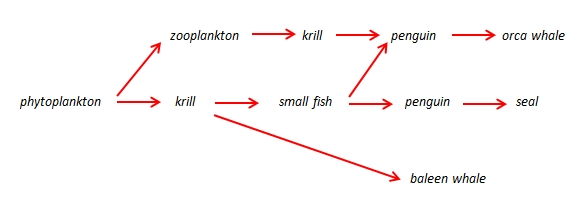You can contact LEARNZ, part of CORE Education, at:
Postal Address:
PO Box 13 678,
Christchurch 8141,
New Zealand
Plants and animals that live in the open ocean are called pelagic. Pelagic food chains start with tiny plants called phytoplankton.
The open ocean is often called the pelagic zone. The pelagic zone is sometimes thought of as a cylinder or column of water that goes from the surface of the sea to near the bottom. Plants and animals that live in this column are called pelagic animals and pelagic plants.
Food is the energy that makes life possible for all animals. Plants make food by taking energy from the sun. This is called photosynthesis. The word ‘photo’ means ‘light’ and ‘synthesis’ means ‘to make things’.
Plants are sometimes called producers because they produce food with energy from the sun. Pelagic plants always live near the surface of the sea.
Animals cannot make food but have to eat either plants or animals to get their energy. Animals are sometimes called consumers. Most pelagic animals don’t need to live near the ocean surface because they can get their energy from plants and animals at any depth.
A food chain is a model of how energy moves from one organism to another in a community. All food chains start with a plant. In the pelagic zone the most common plant is phytoplankton. The word ‘phyto’ means ‘plant’ and ‘plankton’ means ‘to wander’. Phytoplankton are tiny single celled plants too small to see with the naked eye. However, when they are in high numbers the sea water looks a green colour.
Animals that eat phytoplankton are called herbivores. The most common ocean herbivore is zooplankton. Zooplankton are also microscopic but exist in huge numbers in the ocean. Another ocean herbivore is krill. Krill is like a tiny shrimp about 5cm long. They eat mostly phytoplankton and sometimes zooplankton. Krill are a very important food for many larger animals such as fish, birds and whales.
Here are three Antarctic, pelagic food chains:

Here is one food web combining the three food chains above:

,Phytoplankton in the oceans use energy from the sun to make food. This is the start for all marine food chains. Image source

,Ocean food webs start with tiny plants called phytoplankton. Image source

Tiny shrimp krill are an important food source for many marine mammals and fish. Image source
Next step learning: find out about other pelagic fishes and mammals and build two food chains of your own. Combine these two food chains into a food web.